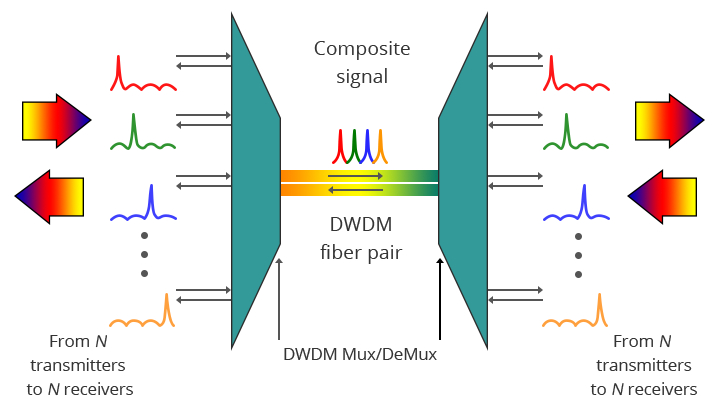- Related articles
- All Cisco CFP-100G-LR4’s information (List price,Specs, Datasheet PDF, Compatibility matri
- All Cisco SFP-OC3-LR2's information (List price, Specs, Datasheet PDF, Compatibility matri
- All Cisco GLC-EX-SMD's information (List price, Specs, Datasheet PDF, Compatibility matrix
- All Cisco MGBLX1's information (List price, Specs, Datasheet PDF, Compatibility matrix)
- Optical Transceivers for Cisco WS-C2960XR-48LPS-I Switch
- Things you need to know about integrated network card
- The Things You Need to Know about 1000BASE-LR Ethernet Standards
- Optical Transceivers for Cisco WS-C2960X-24PD-L Switch
- Optical Transceivers for Cisco WS-C3650-48FS-L Switch
- Optical Transceivers for Cisco SG112-24-UK Switch

Definition
In fiber-optic communications, wavelength-division multiplexing (WDM) is a technology which multiplexes a number of optical carrier signals onto a single optical fiber by using different wavelengths of laser light. This technique enables bidirectional communications over one strand of fiber, as well as multiplication of capacity.
Dense Wavelength Division Multiplexing (DWDM) is an optical multiplexing technology used to increase bandwidth over existing fiber networks. DWDM works by combining and transmitting multiple signals simultaneously at different wavelengths on the same fiber.
Difference between DWDM and WDM
WDM represents the second major fiber-optic revolution in telecommunications. The first came during the 1980s, when telephone companies laced the United States and other countries with fibers to create a global backbone of information pipelines that could carry vastly more data than the copper wires and microwave links they replaced. A decade ago, phone companies had laid cables containing 24 to 36 fibers, many held in reserve as "dark fibers." Each fiber in DWDM carried hundreds of megabits per second at a single wavelength.
WDM takes this advantage a giant step further—multiplying the potential capacity of each fiber by filling it with not just one but many wavelengths of light, each capable of carrying a separate signal. Taking advantage of WDM, long-distance carriers such as AT&T and MCI have been able to avoid laying expensive new cables; instead, they simply pump additional wavelengths through existing fibers.
Long-distance telephone companies were the first to realize that DWDM could cut the cost of bandwidth. Compared with the alternative of adding new fiber, DWDM technology provides a much more effective way to add capacity.
Applications
The telecommunications carriers’ desire to save time and money has driven a rapid development in WDM techniques. In the mid-1990s, the carrier companies began using systems transmitting at four wavelengths, and soon upped the count to eight. Developers quickly sliced the spectrum even more finely to squeeze 16 wavelength channels through a single fiber for what has become known as "dense" WDM (DWDM).
Types of WDM
The following are the types of Multiplexing:
– Time division multiplexing
– Frequency division multiplexing
Optically multiplexing
– Time division multiplexing
– Wavelength division multiplexing
Conclusion
DWDM is available today from several vendors, including FORE Systems, and offers the ability to scale transmission capacity without downtime, forklift upgrades or lengthy provisioning times. WDM-capable port cards extend maximum distance for direct ASX-4000 switch interconnection at OC-48c rate (without WMX-4) to 65+km without amplification, 100+km with amplification.






































































